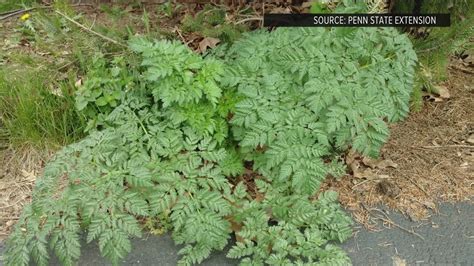
Highly invasive plant, Hedera helix, commonly known as English ivy, is rapidly spreading across the United States, prompting urgent warnings from experts about its detrimental effects on ecosystems and infrastructure. The perennial vine, already widespread in many regions, is exhibiting increasingly aggressive behavior, outcompeting native vegetation and causing structural damage to buildings and trees.
Experts are raising alarms about the plant’s ability to thrive in diverse environments, from forests to urban areas, allowing it to quickly colonize new territories and displace native species. Its evergreen nature provides a competitive advantage, enabling it to photosynthesize year-round and outgrow other plants, depriving them of essential sunlight and nutrients.
“English ivy is an aggressive invader that can smother native plants, girdle trees, and damage buildings,” warned a representative from the U.S. Department of Agriculture (USDA). “Its rapid spread poses a significant threat to biodiversity and ecosystem health.”
The invasive nature of English ivy stems from several factors, including its adaptability to various soil types, its ability to reproduce both sexually (through seeds) and asexually (through vegetative propagation), and its tolerance of shade and drought conditions. These characteristics allow it to establish itself quickly in new areas and persist even under challenging environmental conditions.
One of the most concerning aspects of English ivy’s spread is its impact on forest ecosystems. As it climbs trees, it can block sunlight, preventing photosynthesis and weakening or killing the host tree. The added weight of the ivy can also make trees more susceptible to windthrow during storms. In addition, English ivy can create a dense ground cover that inhibits the growth of native seedlings, preventing forest regeneration.
Beyond its ecological impacts, English ivy can also cause significant damage to infrastructure. Its aerial roots can penetrate cracks in buildings, causing structural damage over time. The weight of the ivy can also damage gutters, roofs, and siding. In urban areas, English ivy can also create a fire hazard, as its dense foliage can provide fuel for wildfires.
Efforts to control English ivy are often challenging and require a combination of methods, including manual removal, herbicide application, and biological control. Manual removal involves physically pulling the ivy from the ground and trees, but this can be labor-intensive and may not be effective if the roots are not completely removed. Herbicide application can be effective in killing the ivy, but it can also harm non-target plants. Biological control, which involves introducing natural enemies of the ivy, is a promising approach, but it requires careful research and evaluation to ensure that the control agents do not become invasive themselves.
Given the widespread distribution and aggressive nature of English ivy, experts emphasize the importance of prevention and early detection. Homeowners and landowners are encouraged to remove English ivy from their properties and to avoid planting it in the first place. Public awareness campaigns can also help to educate people about the threats posed by English ivy and the steps they can take to prevent its spread.
The United States isn’t alone in this battle. Many countries grapple with the invasive nature of English ivy, making it a global ecological concern. Its introduction to new regions, often as an ornamental plant, has repeatedly resulted in similar patterns of ecological disruption and economic damage. This highlights the need for international cooperation and vigilance in preventing the introduction and spread of invasive species.
Ecological Impacts in Detail
English ivy’s ecological effects extend beyond simple competition for resources. Its dense growth alters soil composition, reducing water availability for other plants and changing nutrient cycles. The plant also provides a habitat for certain pests and diseases, potentially increasing the vulnerability of native species to these threats. In coastal areas, English ivy can contribute to erosion by destabilizing slopes and displacing native vegetation that provides crucial soil stabilization.
The vine’s allelopathic properties—the ability to release chemicals that inhibit the growth of other plants—further exacerbate its impact. These chemicals can suppress the germination and growth of native seedlings, giving English ivy a competitive advantage in establishing dominance.
Its impact on wildlife is also multifaceted. While some birds and insects may utilize English ivy for food or shelter, its overall effect on biodiversity is negative. The dense foliage can impede the movement of ground-dwelling animals, and the displacement of native plants reduces the availability of food and habitat for many species. The plant’s berries, while consumed by some birds, are not as nutritious as native berries and can contribute to nutritional imbalances in their diets.
Infrastructure Damage: A Closer Look
The damage English ivy inflicts on infrastructure is not limited to aesthetic concerns. As the vine climbs walls and buildings, its aerial roots penetrate even the smallest cracks and crevices. These roots expand over time, widening the cracks and compromising the structural integrity of the building. The moisture retained by the dense foliage can also contribute to the deterioration of building materials, such as wood, brick, and stone.
The added weight of English ivy can strain roofs, gutters, and other structural elements, leading to costly repairs. In some cases, the vine can even dislodge bricks or tiles, creating safety hazards and further damage. The plant’s ability to climb and spread rapidly allows it to quickly cover large areas, exacerbating the damage.
In urban environments, English ivy poses a particular threat to historical buildings and monuments. The vine’s invasive growth can obscure architectural details and damage delicate structures, making preservation efforts more challenging and expensive. The cost of repairing damage caused by English ivy can be substantial, especially in cases where extensive structural repairs are required.
Control and Management Strategies: An In-Depth Analysis
Effective control and management of English ivy require a multifaceted approach that considers the specific context and scale of the infestation. Manual removal, herbicide application, and biological control are the primary methods used, each with its own advantages and limitations.
Manual removal is most effective for small infestations or in areas where herbicide use is not desirable. This method involves physically pulling the ivy from the ground and trees, ensuring that all roots and stems are removed to prevent regrowth. However, manual removal can be labor-intensive and time-consuming, especially for large infestations. It is also important to dispose of the removed ivy properly to prevent it from re-establishing in other areas.
Herbicide application can be a more efficient method for controlling large infestations, but it requires careful selection and application of herbicides to minimize the risk of harm to non-target plants and the environment. Systemic herbicides, which are absorbed by the plant and translocated throughout its tissues, are generally more effective than contact herbicides, which only kill the parts of the plant that they come into contact with. However, systemic herbicides can also pose a greater risk to non-target plants if they are not applied carefully.
Biological control offers a potentially sustainable solution for managing English ivy, but it requires careful research and evaluation to ensure that the control agents do not become invasive themselves. Several potential biological control agents for English ivy have been identified, including insects, fungi, and nematodes. However, before any biological control agent can be released into the environment, it must undergo rigorous testing to ensure that it is host-specific and will not harm native plants or animals.
Integrated pest management (IPM) strategies, which combine multiple control methods, are often the most effective approach for managing English ivy. IPM involves monitoring ivy populations, identifying the factors that are contributing to its spread, and implementing a combination of control methods that are tailored to the specific situation. IPM strategies can also include preventive measures, such as avoiding planting English ivy and educating the public about the threats it poses.
The Global Perspective: English Ivy as a Worldwide Invader
English ivy’s invasiveness is not limited to the United States. The plant has been introduced to many regions around the world, often as an ornamental plant, and has become a problematic invasive species in numerous countries, including Australia, New Zealand, and parts of Europe.
In Australia, English ivy is considered a major environmental weed, particularly in southeastern states. It invades forests, woodlands, and riparian areas, outcompeting native vegetation and altering ecosystem structure. Control efforts in Australia focus on preventing the spread of English ivy into new areas and managing existing infestations through manual removal and herbicide application.
In New Zealand, English ivy is also a widespread invasive species, posing a threat to native forests and other natural habitats. The plant is particularly problematic in urban areas, where it can climb buildings and infrastructure, causing damage. Control efforts in New Zealand include public awareness campaigns to discourage the planting of English ivy and encourage the removal of existing infestations.
In Europe, English ivy is native to some regions but has become invasive in others. In areas where it is not native, English ivy can outcompete native plants and alter ecosystem dynamics. Control efforts in Europe focus on preventing the spread of English ivy into new areas and managing existing infestations through manual removal and herbicide application.
The global distribution of English ivy as an invasive species highlights the importance of international cooperation in preventing the introduction and spread of invasive species. This includes sharing information about the risks posed by invasive species, developing and implementing effective control strategies, and regulating the trade in potentially invasive plants.
Preventive Measures and Public Awareness
Preventing the spread of English ivy is crucial for minimizing its ecological and economic impacts. This requires a combination of individual actions and public policies.
Homeowners and landowners can play a significant role in preventing the spread of English ivy by avoiding planting it on their properties and removing existing infestations. When removing English ivy, it is important to ensure that all roots and stems are removed to prevent regrowth. The removed ivy should be disposed of properly to prevent it from re-establishing in other areas.
Public awareness campaigns can help to educate people about the threats posed by English ivy and the steps they can take to prevent its spread. These campaigns can include information on how to identify English ivy, how to remove it, and the importance of avoiding planting it. Public awareness campaigns can also target specific groups, such as gardeners, landscapers, and homeowners, with tailored messages.
Governments and other organizations can also implement policies to prevent the spread of English ivy. These policies can include regulations on the sale and planting of English ivy, requirements for the removal of English ivy from public lands, and funding for research and control efforts.
Research and Innovation: The Future of English Ivy Management
Ongoing research and innovation are essential for developing more effective and sustainable methods for managing English ivy. This includes research on the biology and ecology of English ivy, the development of new control technologies, and the evaluation of different management strategies.
One promising area of research is the development of biological control agents for English ivy. This involves identifying natural enemies of English ivy, such as insects, fungi, and nematodes, and evaluating their potential as biological control agents. Before any biological control agent can be released into the environment, it must undergo rigorous testing to ensure that it is host-specific and will not harm native plants or animals.
Another area of research is the development of new herbicide formulations that are more effective at killing English ivy while minimizing the risk of harm to non-target plants and the environment. This includes research on the use of targeted herbicides that are designed to selectively kill English ivy without affecting other plants.
Technological innovations, such as drones and remote sensing, can also play a role in managing English ivy. Drones can be used to map and monitor English ivy infestations, allowing for more targeted control efforts. Remote sensing can be used to detect English ivy infestations early, before they become widespread.
The Economic Costs of English Ivy Invasion
The economic costs associated with English ivy invasion are substantial and multifaceted. These costs include direct expenditures on control and removal efforts, as well as indirect costs associated with damage to infrastructure, reduced property values, and losses in agricultural and forestry productivity.
Direct expenditures on control and removal efforts can be significant, especially for large infestations. These costs include the cost of labor, equipment, and materials, such as herbicides. In some cases, specialized equipment and expertise may be required to remove English ivy from difficult-to-reach areas, such as tall trees or steep slopes.
Damage to infrastructure can also result in significant economic costs. As English ivy climbs buildings and other structures, its aerial roots can penetrate cracks and crevices, causing structural damage. The weight of the ivy can also strain roofs, gutters, and other structural elements. Repairing damage caused by English ivy can be costly, especially in cases where extensive structural repairs are required.
Reduced property values can also result from English ivy invasion. Properties that are heavily infested with English ivy may be less attractive to potential buyers, leading to lower sale prices. The presence of English ivy can also increase the cost of maintaining a property, as it may require ongoing control efforts to prevent the vine from spreading.
Losses in agricultural and forestry productivity can also result from English ivy invasion. English ivy can outcompete crops and timber trees, reducing yields and profits. The vine can also interfere with harvesting operations, making it more difficult and expensive to harvest crops or timber.
The Role of Citizen Science in Monitoring and Control
Citizen science initiatives can play a valuable role in monitoring and controlling English ivy infestations. By engaging volunteers in data collection and monitoring efforts, citizen science projects can provide valuable information about the distribution and spread of English ivy, as well as the effectiveness of different control methods.
Citizen science projects can also help to raise public awareness about the threats posed by English ivy and encourage people to take action to prevent its spread. By participating in citizen science projects, volunteers can learn how to identify English ivy, how to remove it, and the importance of avoiding planting it.
Several citizen science projects focused on monitoring and controlling invasive species already exist, and these projects could be expanded to include English ivy. These projects typically involve volunteers collecting data on the location and abundance of invasive species, as well as information on the environmental conditions in which they are found. The data collected by volunteers is then used by scientists and land managers to inform management decisions.
Frequently Asked Questions (FAQ)
Q1: What makes English ivy so invasive?
A1: English ivy’s invasiveness stems from its adaptability, rapid growth, and dual reproduction methods (seeds and vegetative propagation). It thrives in diverse environments, tolerates shade and drought, and outcompetes native plants for resources like sunlight and nutrients. The evergreen nature allows it to photosynthesize year-round, giving it a further competitive edge.
Q2: What kind of damage can English ivy cause?
A2: English ivy causes ecological damage by smothering native plants, girdling trees, and preventing forest regeneration. It also damages infrastructure by penetrating cracks in buildings, causing structural damage, and adding weight to roofs and gutters. In urban areas, it can create a fire hazard due to its dense foliage.
Q3: How can I control English ivy on my property?
A3: Control methods include manual removal (pulling the ivy from the ground and trees), herbicide application (using systemic herbicides carefully), and potentially biological control (introducing natural enemies, although this requires careful research). An integrated approach combining these methods is often most effective.
Q4: Is English ivy invasive everywhere, or only in certain regions?
A4: While native to some parts of Europe, English ivy has become invasive in many regions worldwide, including the United States, Australia, and New Zealand. Its introduction as an ornamental plant has often led to ecological disruption in non-native areas.
Q5: What can I do to prevent the spread of English ivy?
A5: Avoid planting English ivy, remove existing infestations on your property, and dispose of removed ivy properly to prevent re-establishment. Participate in public awareness campaigns to educate others about the threats posed by English ivy, and support policies that regulate its sale and planting.









